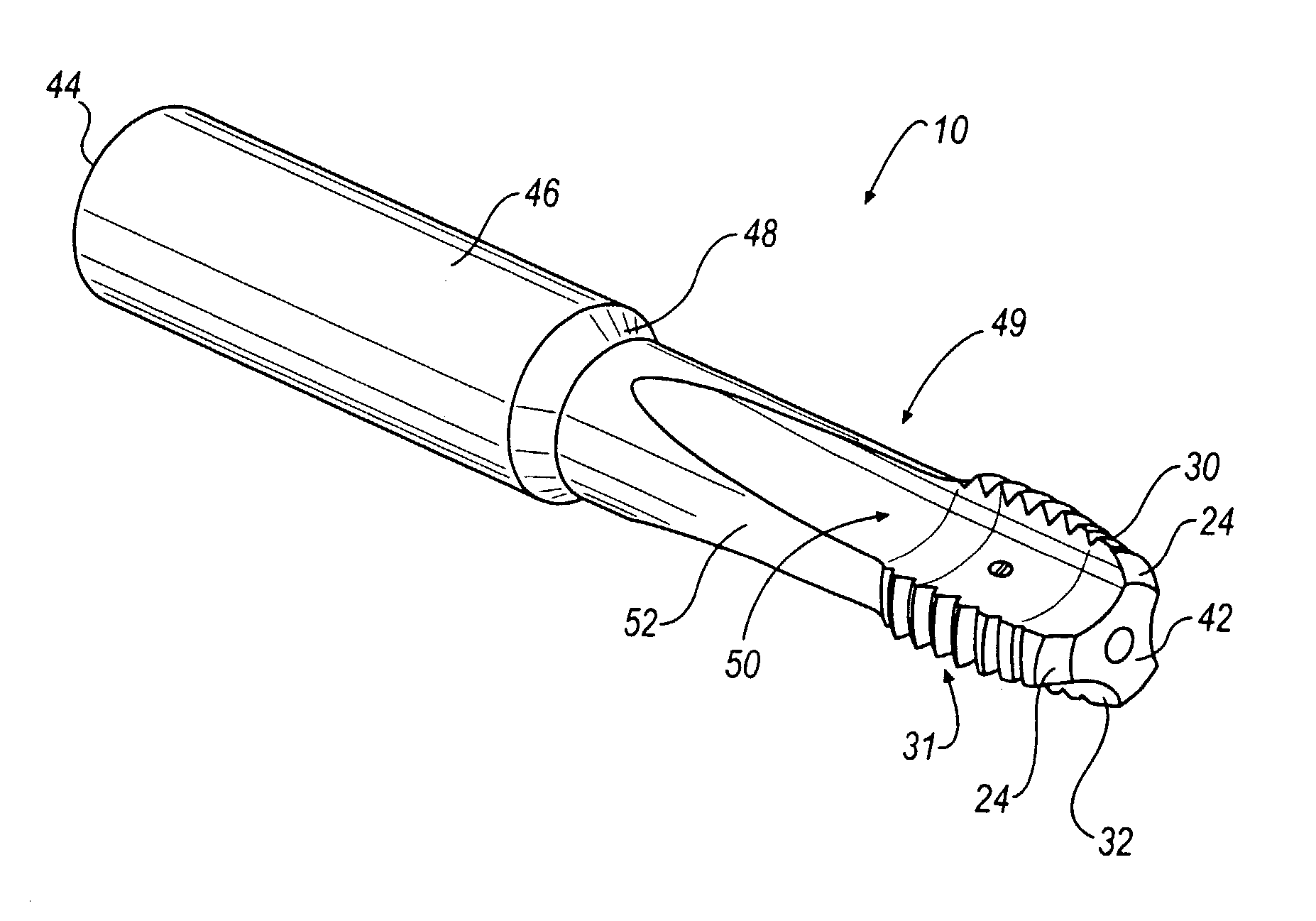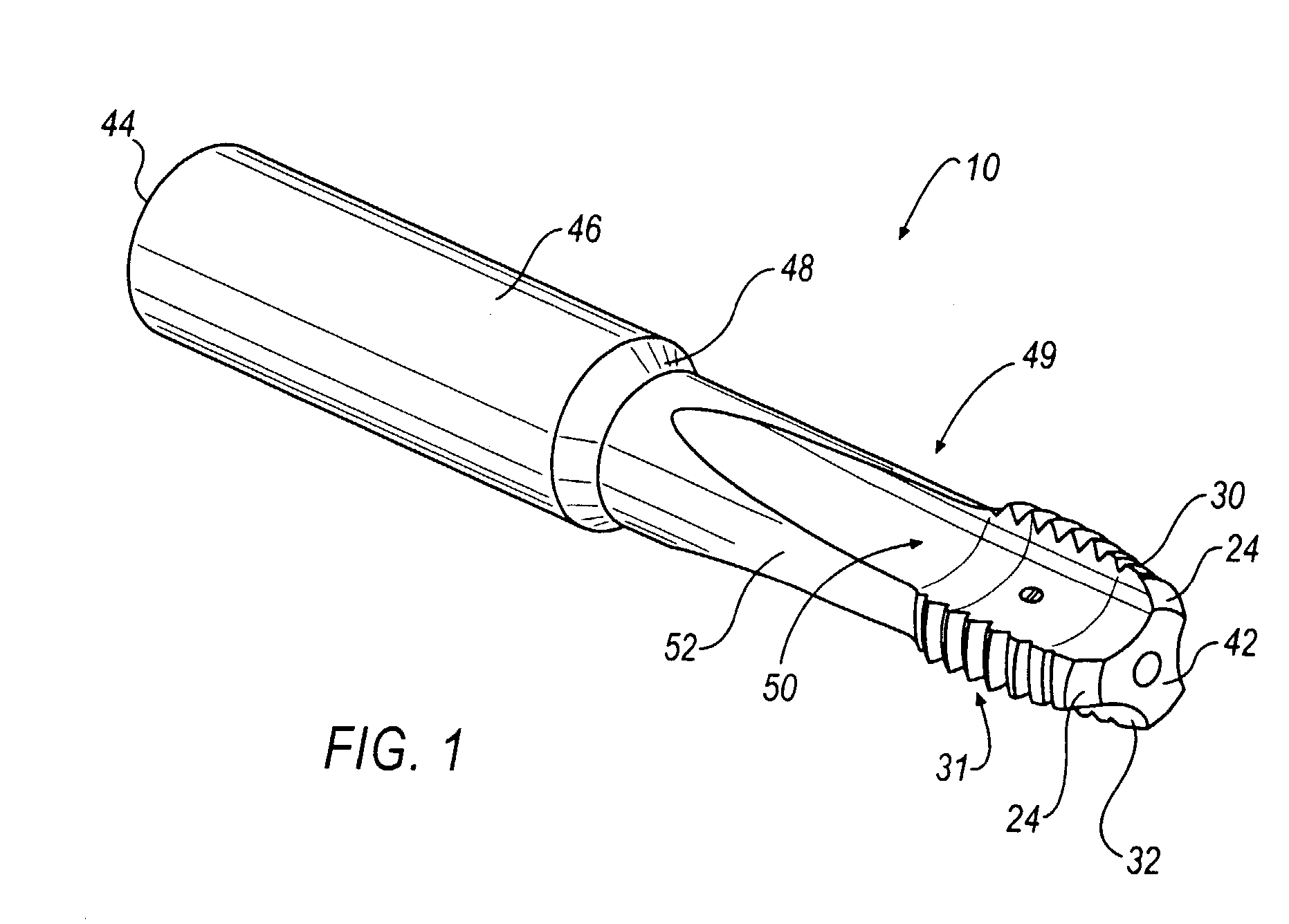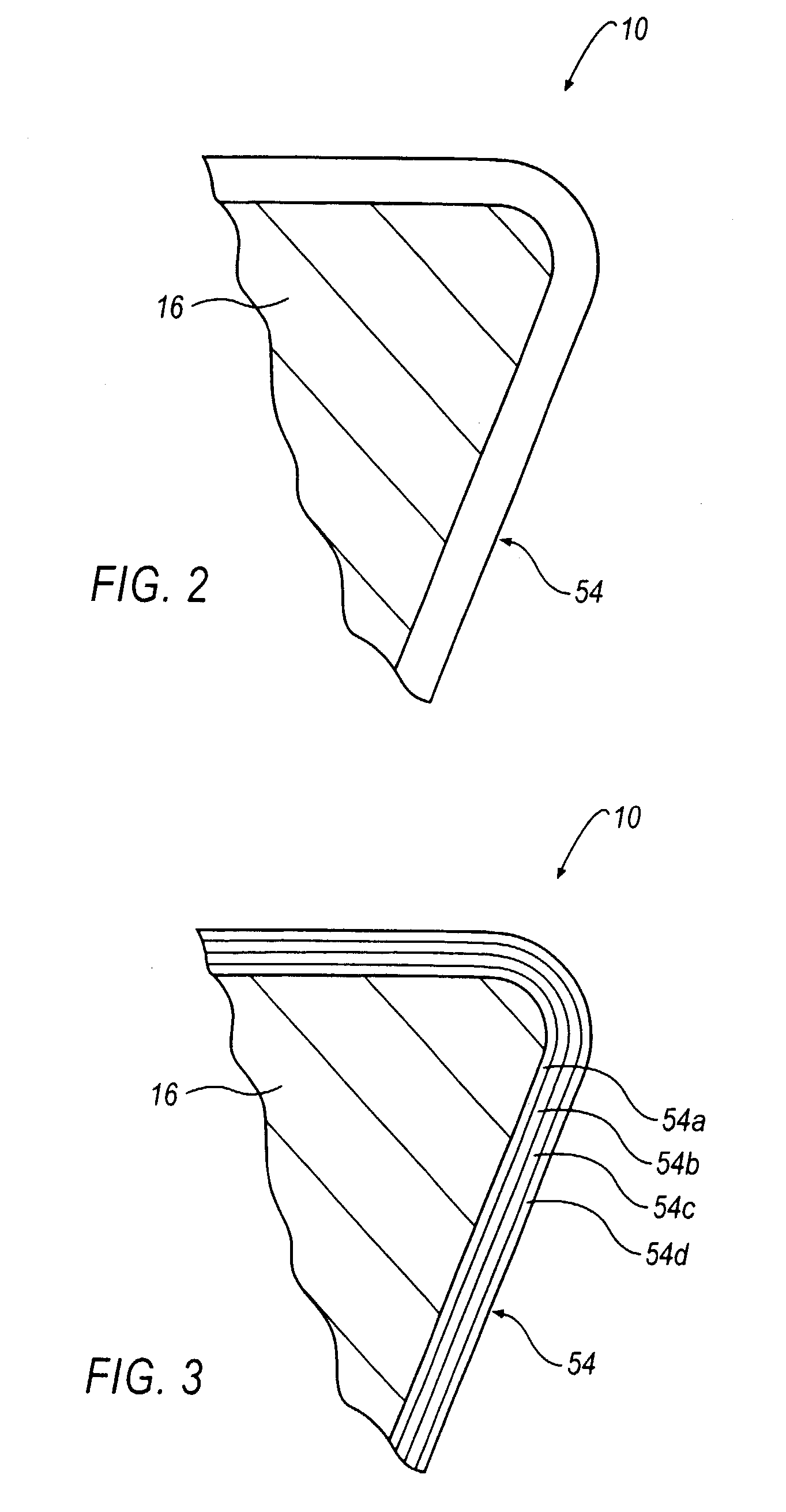Coated carbide tap
a technology of coated carbide and tap, which is applied in the field of cutting tools, can solve the problems of reducing the useful cutting speed, reducing the fracture toughness and strength of cemented tungsten carbide, and moderate resistance to temperatur
- Summary
- Abstract
- Description
- Claims
- Application Information
AI Technical Summary
Benefits of technology
Problems solved by technology
Method used
Image
Examples
Embodiment Construction
[0020]Referring now to FIG. 1, a precision carbide cemented threading tap, shown generally at 10, is illustrated according to an embodiment of the invention. The tap 10 is manufactured from a cylindrical sintered tungsten carbide blank frequently referred to as a substrate 16 (FIGS. 2–8). The blank has a diameter that is sized larger than the finished dimensions of the tap 10 and is cut to length on surfaces 42 and 44.
[0021]A typical material for the substrate 16 is tungsten carbide cemented with cobalt. The amount of cobalt can range between about 12 weight percent to about 16 weight percent. In addition, small amount of transition metal carbides may be added to restrain grain growth, and the substrate 16 may also contain low levels of impurities that might be picked up during processing.
[0022]The first step in processing the substrate 16 is to grind the blank to precision cylindrical tolerances by methods such as cylindrical traverse grinding on centers or by centerless infeed gri...
PUM
| Property | Measurement | Unit |
|---|---|---|
| weight percent | aaaaa | aaaaa |
| angle | aaaaa | aaaaa |
| wear resistant | aaaaa | aaaaa |
Abstract
Description
Claims
Application Information
 Login to View More
Login to View More - R&D
- Intellectual Property
- Life Sciences
- Materials
- Tech Scout
- Unparalleled Data Quality
- Higher Quality Content
- 60% Fewer Hallucinations
Browse by: Latest US Patents, China's latest patents, Technical Efficacy Thesaurus, Application Domain, Technology Topic, Popular Technical Reports.
© 2025 PatSnap. All rights reserved.Legal|Privacy policy|Modern Slavery Act Transparency Statement|Sitemap|About US| Contact US: help@patsnap.com



